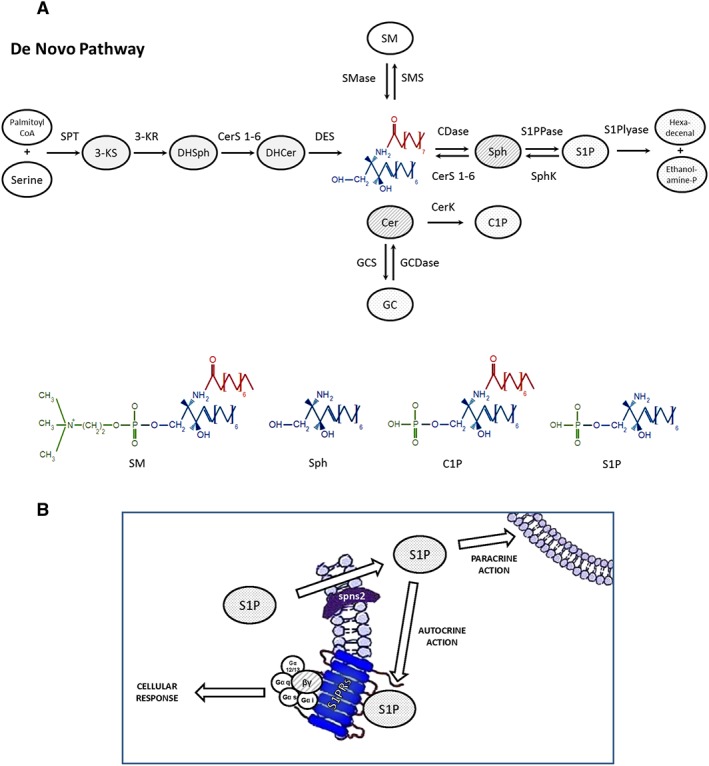Figure 1.

Metabolism of sphingolipids. (A). De novo synthesis of sphingolipids leads to the formation of ceramide (Cer) and sphingosine 1‐phosphate (S1P) through four reactions catalyzed by the serine palmitoyltransferase (SPT), which condenses palmitoyl‐CoA and serine into 3‐ketosphinganine (3‐KS), the 3‐ketosphinganine reductase (3‐KR), which generates sphinganine (DHSph), the (dihydro) ceramide synthase (CerS), which acylates sphinganine to dihydroceramide (DHCer), and the dihydroceramide desaturase (DES), which converts relatively inactive dihydroceramide to ceramide. The latter is converted to sphingosine (Sph) by ceramidase (CDase). Sphingosine can be converted to S1P by sphingosine kinase (SPHK) or to ceramide by CerS. The degradation of S1P is achieved by the reversible reaction catalyzed by the S1P phosphatase and the irreversible reaction catalyzed by S1P lyase, which produces hexadecenal and ethanolamine phosphate. The cell membrane constituent sphingomyelinase (SMase/SMPD) generates ceramide from sphingomyelin (SM). Phosphorylation of ceramide by ceramide kinase (CERK) generates ceramide 1‐phosphate (C1P). In the golgi, ceramide is converted to SM by SM synthase or to glucosylceramide (GC) by glucosylceramide synthase (GCS). GlcCer is then processed to more complex glycosphingolipids (not shown). Glucosylceramidase (GCDase; also called glucosylcerebrosidase) produces ceramide from glucosylCer. (B) S1P can be exported outside the cells by ABC transporters and the putative transporter Spinster 2 (spns2) and elicits autocrine or paracrine signalling by binding to and activating GPCRs (S1P1–5 receptors; S1PRs). G‐proteins are composed of three subunits: α, β and γ and are classified as G(q), G(i/o), G(12/13) and G(s) depending on the function of their α subunits.
